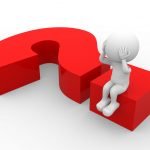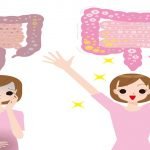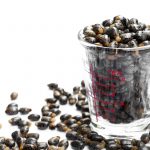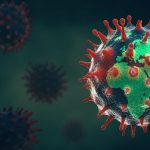Setting the Record Straight: Homœopathy’s Rightful Place in Naturopathic Medicine
JAMIE OSKIN, ND, DHANP
ERIC UDELL, ND
The January 2019 article by Nelson et al, “The Bell Tolls for Homeopathy: Time for Change in the Training and Practice of North American Naturopathic Physicians,”1 necessitated this response in order to correct numerous factual errors and logical fallacies. In truth, the task of properly critiquing this article requires more space than that allotted to us here. A more thorough response is pending publication in the American Journal of Homeopathic Medicine. In this highly condensed article, we have done our best to highlight the article’s most egregious errors.
The history of homœopathy is riddled with confusion, controversy, and skepticism, yet homœopathy is one of the most popular forms of complementary and alternative medicine, used by 500 million people worldwide.2-4 The potentially positive role of homœopathy within integrative medical settings has been demonstrated in hospitals internationally.5-7
Erroneous Claims, Bad Science
The assertion by Nelson et al that homœopathy is mere placebo is not evidence based. It is generally accepted that plants and cell cultures are not susceptible to the placebo effect, while the role of placebo in animals is controversial. Homœopathic medicines have been shown to have biological effects in animal,8-11 plant,12 and cell culture/gene expression studies.13-36 For example, a rigorous randomized placebo-controlled study found that a homœopathic medicine prevented Escherichia coli-induced diarrhea in piglets (p<0.0001).37 Veterinary, plant, and cell-culture studies clearly refute the argument by Nelson et al that the effects of homœopathy are due exclusively to the consultation itself, ie, the result of provider empathy and authority.
Four out of 5 systematic reviews of homœopathy demonstrate an effect of the modality beyond placebo.38-42 A paper published by Shang et al was the lone review to arrive at a different conclusion, yet the Shang paper was the only one cited by Nelson et al. The conclusion of the Shang study is dubious, as they relied on only 8 clinical trials and only disclosed the identity of those trials after the publication of the paper when their results were called into question. It is now known that Shang et al did not compare similar medical conditions when differentiating the effectiveness of homœopathy and conventional medicine.43 Furthermore, a 2014 reanalysis of the Shang’s data, which focused solely on that subset of the trials that had been peer reviewed, found a “statistically highly significant effect of homeopathy.”44
Aggregating trials of homœopathy in systematic reviews is problematic in research trials due to the heterogeneity of the term “homœopathy.” Mathie et al published an analysis of clinical trials of individualized homeœopathy and demonstrated that the highest-quality trials had positive results.45 When examining specific medical conditions for which there are high-quality, placebo-controlled studies, several conditions have been shown to respond positively to homœopathy, including diarrhea,46 otitis media,47,48 allergic rhinitis,49-51 vertigo,52 and ADHD.53
In their critique, Nelson et al cited the report by the Australian Government National Health and Medical Research Council (NHMRC), which stated that there are no high-quality studies indicating an effect for homœopathy beyond placebo.54 Not only does this conclusion contradict the 2014 reanalysis of the Shang paper and the Mathie et al paper cited in the previous paragraph, but an extensive investigation and in-depth analysis has also called into question the NHMRC report due to “serious procedural and scientific misconduct in producing the report.” As a result, a full investigation of the NHMRC’s conduct has been initiated by the office of the Commonwealth Ombudsman to answer “charges of bias, conflict of interest and scientific misconduct.”55
In August 2019, following Freedom of Information [FOI] requests, the NHMRC released a first report (dated 2012) that had not been previously revealed to the public. That report found “encouraging evidence for the effectiveness of homœopathy” in 5 medical conditions, including otitis media, upper respiratory tract infections in adults, and in some side effects of cancer treatments.56 The NHMRC has been justly criticized for using unconventional and scientifically questionable procedures, yet this report continues to be cited frequently as evidence against homœopathy. Astonishingly, the current NHMRC CEO, Professor Anne Kelso, issued the following statement: “Contrary to some claims, the review did not [emphasis ours] conclude that homeopathy was ineffective.”56 The Shang and NHMRC reviews, taken together, demonstrate a tendency on the part of homœopathic skeptics to manipulate data in order to confirm their bias. Simultaneously, it calls into question Nelson et al’s reliance on these 2 papers to justify their argument.
Data Skewing, Questionable Motives
The extreme dilutions used in homœopathic medications have been the subject of heated controversy. It is argued that they contain no active ingredient and are, therefore, inert. Per current scientific research, this assumption is incorrect and outdated. In 2010, Chikramane et al were the first to discover the presence of nanoparticle source materials in homœopathic medicines.57 Basic science research into the physical and chemical properties of homœopathic medicines is emerging from independent research laboratories around the globe. This line of research shows that homœopathic medicines contain various nanostructures including source materials, silica, and gas nanobubbles, heterogeneously dispersed in colloidal solution.58 Emerging research hypothesizes that these nanoparticle substances modulate a whole-person, adaptive (allostatic) stress response to restore a stable internal environment. This stress response network is modulated by cytokines, oxidative stress, and heat shock proteins.59,60 The fact that the exact mechanism of action of homœopathic medications is not known at this time should not preclude their clinical efficacy. The argument that homœopathy is biologically implausible has been disputed in the scientific literature, yet the debate has largely been ignored. As Rutten et al stated,43
Mistrust in the evidence for homeopathy is primarily based on plausibility. Demanding RCTs to decrease disbelief (Hansen and Kappel 2010), and subsequently ignoring their results on grounds of the same disbelief, is circular reasoning.
The contention of Nelson et al that homœopathy did not enter naturopathic medical education until the 1970s is simply false. In reality, it has been part of naturopathic medical education in North America from its inception.61 In fact, the naturopathic medical profession in North America is especially well suited to provide its graduates with a rigorous homœopathic education. Naturopathic doctors are, by training, experts in integrative medicine and, currently, the only medically trained and licensed health professionals in North America who study homœopathy as part of their medical education. Medically trained professionals improve patient safety by making sure homœopathy is used only when it is an appropriate therapy and, when used, that the patient is monitored properly.
Lastly, Nelson et al’s disclosed financial ties to the pharmaceutical industry1 call into serious question their true motivation for publishing their article. The potential of pharmaceutical industry influence to bias medical education has already been demonstrated in the case of conventional medical education.62,63
# Aude sapere (Dare to be wise) #
References:
- Nelson DH, Perchaluk JM, Logan AC, Katzman MA. The bell tolls for homeopathy: time for change in the training and practice of North American naturopathic physicians. J Evid Based Integr Med. 2019;24:2515690X18823696. doi 10.1177/2515690X18823696.
- Prasad R. Homoeopathy booming in India. Lancet. 2007;370(9600):1679-1680.
- Commission of the European Communities. Homeopathic Medicinal Products. Commission Report to the European Parliament and the Council on the Application of Directives 92/73 and 92/74. July 14, 1997. Brussels. Available at: http://aei.pitt.edu/3520/1/3520.pdf. Accessed January 28, 2019.
- Kaul PN. Alternative therapeutic modalities. Alternative medicine. Prog Drug Res. 1996;47:251-277.
- Frass M, Dielacher C, Linkesch M, et al. Influence of potassium dichromate on tracheal secretions in critically ill patients. Chest. 2005;127(3):936-941.
- Frass M, et al. Adjunctive homeopathic treatment in patients with severe sepsis: a randomized, double-blind, placebo-controlled trial in an intensive care unit. Homeopathy. 2005;94(2):75-80.
- Karow JH, Abt HP, Fröhling M, Ackermann H. Efficacy of arnica montana D4 for healing of wounds after hallux valgus surgery compared to diclofenac. J Altern Complement Med. 2008;14(1):17-25.
- Ferreira ÉC, Ciupa L, Portocarrero AR, et al. Phosphorus protects cardiac tissue by modifying the immune response in rats infected by Trypanosoma cruzi. Cytokine. 2018;102:102-106.
- Mazloomi E, Ilkhanizadeh B, Zare A, Shahabi S. Evaluation of the efficacy of isopathic immunotherapy in the treatment of allergic asthma in BALB/C mice. J Asthma. 2020;57(6):670-679.
- Kumar KB, Sunila E, Kuttan G, et al. Inhibition of chemically induced carcinogenesis by drugs used in homeopathic medicine. Asian Pac J Cancer Prev. 2007;8(1):98-102.
- Doutremepuich C, Aguejouf O, Eizayaga FX, Desplat V. Reverse effect of aspirin: is the prothrombotic effect after aspirin discontinuation mediated by cyclooxygenase 2 inhibition? Pathophysiol Haemost Thromb. 2007;36(1):40-44.
- Barreto CS, Homsani F, Holandino C, Barboza da Silva NC. Plant Tissue culture and Ultra High Diluted studies: suggesting a novel model using in vitro techniques. International Journal of High Dilution Research. 2016;15(4):45-49.
- De A, Das D, Dutta S, et al. Potentized homeopathic drug Arsenicum Album 30C inhibits intracellular reactive oxygen species generation and up-regulates expression of arsenic resistance gene in arsenite-exposed bacteria Escherichia coli. Journal of Chinese Integrative Medicine. 2012;10(2):210-227.
- Sunila ES, Kuttan R, Preethi KC, Kuttan G. Dynamized preparations in cell culture. Evidence Based Complement Alternat Med. 2009;6(2):257-263.
- Khuda-Bukhsh AR. Potentized homeopathic drugs act through regulation of gene expression: a hypothesis to explain their mechanism and pathways of action in vitro. Complement Ther Med. 1997;5(1):43-46.
- Khuda-Bukhsh AR, Bhattacharya SS, Paul S. PLGA Nanoparticle encapsulated plant extract (Gelsemium sempervirens) enhances cellular uptake and increases bioactivity: Novel findings from an in vitro study. Tsitol Genet. 2009;14:15-28.
- Samadder A, Das S, Das J, et al. The potentized homeopathic drug, Lycopodium clavatum (5C and 15C) has anti-cancer effect on HeLa cells in vitro. J Acupunct Meridian Stud. 2013;6(4):180-187.
- Mondal J, Panigrahi AK, Khuda-Bukhsh AR. Anticancer potential of Conium maculatum extract against cancer cells in vitro: Drug-DNA interaction and its ability to induce apoptosis through ROS generation. Pharmacogn Mag. 2014;10(Suppl 3):S524-S533.
- Khuda-Bukhsh AR. Current trends in high dilution research with particular reference to gene regulatory hypothesis. Nucleus (India). 2014;57(1):3-17.
- Samadder A, Khuda-Bukhsh AR. Nanotechnological approaches in diabetes treatment: A new horizon. World J Transl Med. 2014;3(2):84-95.
- Saha SK, Roy S, Khuda-Bukhsh AR. Ultra-highly diluted plant extracts of Hydrastis canadensis and Marsdenia condurango induce epigenetic modifications and alter gene expression profiles in HeLa cells in vitro. J Integr Med. 2015;13(6):400-411.
- Mandal SK, Biswas R, Bhattacharyya SS, et al. Lycopodine from Lycopodium clavatum extract inhibits proliferation of HeLa cells through induction of apoptosis via caspase-3 activation. Eur J Pharmacol. 2010;626(2-3):115-122.
- Khuda-Bukhsh AR. Towards understanding molecular mechanisms of action of homeopathic drugs: an overview. Mol Cell Biochem. 2003;253(1-2):339-345.
- Khuda-Bukhsh AR, Roy-Karmakar S, Banerjee A, et al. A follow-up study on the efficacy of the homeopathic remedy Arsenicum album in volunteers living in high risk Arsenic contaminated areas. Evid Based Complement Alternat Med. 2011;2011:129214.
- Khuda-Bukhsh AR, Sikdar S. Condurango 30C Induces Epigenetic Modification of Lung Cancer-specific Tumour Suppressor Genes via Demethylation. Forsch Komplementmed. 2015;22(3):172-179.
- Khuda-Bukhsh AR, Bhattacharyya SS, Paul S, et al. Modulation of signal proteins: a plausible mechanism to explain how a potentized drug Secale cor 30C diluted beyond Avogadro’s limit combats skin papilloma in mice. Evid Based Complement Alternat Med. 2011;2011:286320.
- Das D, De A, Dutta S, et al. Potentized homeopathic drug Arsenicum Album 30C positively modulates protein biomarkers and gene expressions in Saccharomyces cerevisiae exposed to arsenate. Zhong Xi Yi Jie He Xue Bao. 2011;9(7):752-760.
- Khuda-Bukhsh AR, Chakrabarti J. Effects of sonication on chromosomes of mice, Mus musculus, and modifying effects of a homeopathic drug, Arnica Montana on them. Tsitol Genet. 1998;9:333-340.
- Khuda-Bukhsh AR. An evidence-based evaluation of efficacy of homeopathic drugs in mice during induced hepatocarcinogenesis. Tsitol Genet. 2007;13:177-185.
- Khuda-Bukhsh AR, De A, Das D, et al. Analysis of the capability of ultra-highly diluted glucose to increase glucose uptake in arsenite-stressed bacteria Escherichia coli. Zhong Xi Yi Jie He Xue Bao. 2011;9(8):901-912.
- Marzotto M, Olioso D, Brizzi M, et al. Extreme sensitivity of gene expression in human SH-SY5Y neurocytes to ultra-low doses of Gelsemium sempervirens. BMC Complement Altern Med. 2014;14:104-124.
- Preethi K, Ellanghiyil S, Kuttan G, Kuttan R. Induction of apoptosis of tumor cells by some potentiated homeopathic drugs: implications on mechanism of action. Integr Cancer Ther. 2012;11(2):172-182.
- Mukherjee A, Sikdar S, Bishayee K, et al. Flavonol isolated from ethanolic leaf extract of Thuja occidentalis arrests the cell cycle at G2-M and induces ROS-independent apoptosis in A549 cells, targeting nuclear DNA. Cell Prolif. 2014;47(1):56-71.
- Bishayee K, Chakraborty D, Ghosh D, et al. Lycopodine triggers apoptosis by modulation 5-lipoxygenase, and depolarizing mitochondrial membrane potential in androgen sensitive and refractory prostate cancer cells without modulating p53 activity: signaling cascade and drug-DNA interaction. Eur J Pharmacol. 2013;698(1-3):110-121.
- Bishayee K, Paul A, Ghosh S, et al. Condurango-glycoside-A fraction of Gonolobus condurango induces DNA damage associated senescence and apoptosis via ROS-dependent p53 signalling pathway in HeLa cells. Mol Cell Biochem. 2013;382(1-2):173-183.
- Olsen S. Effects of ultra-high dilutions of sodium butyrate on viability and gene expression in HEK 293 cells. Homeopathy. 2017;106(1):32-36.
- Camerlink I, Ellinger L, Bakker EJ, Lantinga EA. Homeopathy as replacement to antibiotics in the case of Escherichia coli diarrhoea in neonatal piglets. Homeopathy. 2010;99(1):57-62.
- Kleijnen J, Knipschild P, ter Riet G. Clinical trials of homoeopathy. BMJ. 1991;302(6772):316-323.
- Linde K, Clausius N, Ramirez G, et al. Are the clinical effects of homeopathy placebo effects? A meta-analysis of placebo controlled trials. Lancet. 1997;350(9081):834-843.
- Linde K, Scholz M, Ramirez G, et al. Impact of study quality on outcome in placebo-controlled trials of homeopathy. J Clin Epidemiol. 1999;52(7):631-636.
- Cucherat M, Haugh MC, Gooch M, Boissel JP. Evidence of clinical efficacy of homeopathy. A meta-analysis of clinical trials. HMRAG. Homeopathic Medicines Research Advisory Group. Eur J Clin Pharmacol. 2000;56(1):27-33.
- Shang A, Huwiler-Muntener K, Nartey L, et al. Are the clinical effects of homeopathy placebo effects? Comparative study of placebo-controlled trials of homeopathy and allopathy. Lancet. 2005;366(9487):726-732.
- Rutten L, Mathie RT, Fisher P, et al. Plausibility and evidence: the case of Homeopathy. Med Health Care Philos. 2013;16(3):525-532.
- British Homeopathic Association. The meta-analysis by Shang et al (2005) of randomised controlled trials of homeopathy. October 2014. Available at: https://www.britishhomeopathic.org/wp-content/uploads/2014/11/Shang-re-analysis.pdf. Accessed May 2, 2020.
- Mathie RT, Lloyd SM, Legg LA, et al. Randomised placebo-controlled trials of individualised homeopathic treatment: systematic review and meta-analysis. Syst Rev. 2014;3:142.
- Jacobs J, Jonas WB, Jiménez-Pérez M, Crothers D. Homeopathy for childhood diarrhea: combined results and metaanalysis from three randomized, controlled clinical trials. Pediatr Infect Dis J. 2003;22(3):229-234.
- Jacobs J, Springer DA, Crothers D. Homeopathic treatment of acute otitis media in children: a preliminary randomized placebo-controlled trial. Pediatr Infect Dis J. 2001;20(2):177-183.
- Sinha MN, Siddiqui VA, Nayak C, et al. Randomized controlled pilot study to compare homeopathy and conventional therapy in acute otitis media. Homeopathy. 2012;101(1):5-12.
- Wiesenauer M, Lüdtke R. A meta-analysis of the homeopathic treatment of pollinosis with Galphimia glauca. Forsch Komplementarmed. 1996;3:230-234.
- Reilly DT, Taylor MA, McSharry C, Aitchison T. Is homoeopathy a placebo response? Controlled trial of homoeopathic potency, with pollen in hayfever as model. Lancet. 1986;2(8512):881-886.
- Taylor MA, Reilly D, Llewellyn-Jones RH, et al. Randomised controlled trial of homoeopathy versus placebo in perennial allergic rhinitis with overview of four trial series. BMJ. 2000;321(7259):471-476.
- Schneider B, Klein P, Weiser M. Treatment of vertigo with a homeopathic complex remedy compared with usual treatments: a meta-analysis of clinical trials. Arzeimittelforschung. 2005;55(1):23-29.
- Frei H, Everts R, von Ammon K, et al. Homeopathic treatment of children with attention-deficit hyperactivity disorder: a randomised, double blind, placebo controlled crossover trial. Eur J Paediatr. 2005;164(12):758-767.
- Australian Government. National Health and Medical Research Council. NHMRC statement: Statement on Homeopathy. March 2015. Available at: https://nhmrc.gov.au/sites/default/files/images/nhmrc-statement-on-homeopathy.pdf. Accessed January 20, 2019.
- Homeopathy Research Institute. The Australian report. Available at: https://www.hri-research.org/resources/homeopathy-the-debate/the-australian-report-on-homeopathy/. Accessed January 20, 2019.
- Kelso A. CEO Statement. The Effectiveness of Homeopathy: An overview review of secondary evidence. August 20, 2019. Australian Government. National Health and Medical Research Council. Available at: https://www.hri-research.org/wp-content/uploads/2019/08/Draft-annotated-2012-homeopathy-report.pdf. Accessed December 11, 2019.
- Chikramane PS, Suresh AK, Bellare JR, Kane SG. Extreme homeopathic dilutions retain starting materials: A nanoparticulate perspective. Homeopathy. 2010;99(4):231-242.
- Upadhyay RP, Nayak C. Homeopathy emerging as nanomedicine. International Journal of High Dilution Research. 2011;10(37):299-310.
- Bell IR, Koithan M. A model for homeopathic remedy effects: low dose nanoparticles, allostatic cross-adaptation, and time-dependent sensitization in a complex adaptive system. BMC Complement Altern Med. 2012;12:191.
- Bell IR, Koithan M, Brooks AJ. Testing the nanoparticle-allostatic cross-adaptation-sensitization model for homeopathic remedy effects. Homeopathy. 2013;102(1):66-81.
- Kirchfeld F, Boyle W. Nature Doctors: Pioneers in Naturopathic Medicine. Portland, OR: NCNM Press; 1994: 73.
- Austad K, Avorn J, Franklin JM, et al. Changing Interactions Between Physician Trainees and the Pharmaceutical Industry: A National Survey. J Gen Intern Med. 2013;28(8):1064-1071.
- Glauser W, Pharma influence widespread at medical schools: study. CMAJ. 2013;185(13):1121-1122.
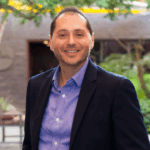
Jamie Oskin, ND, DHANP, is a board member of the Homeopathic Academy of Naturopathic Physicians (HANP), adjunct faculty in the homœopathy department at Southwest College of Naturopathic Medicine in Tempe, AZ, and is in private practice at Arizona Natural Health Center in Phoenix, AZ.
***

Eric Udell, ND, is a board member of the HANP, adjunct faculty in the homœopathy department at Southwest College of Naturopathic Medicine in Tempe, AZ, and is in private practice at Arizona Natural Health Center in Phoenix, AZ.





